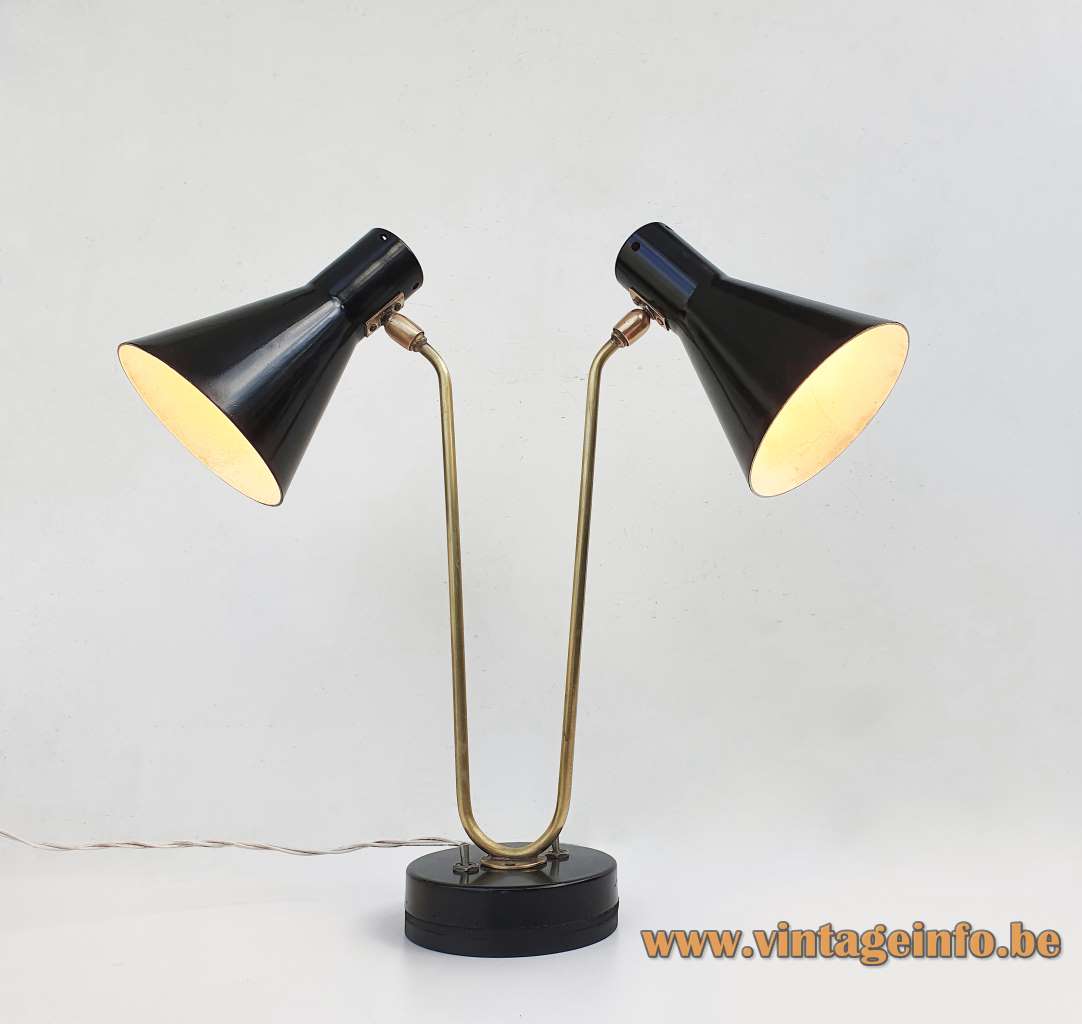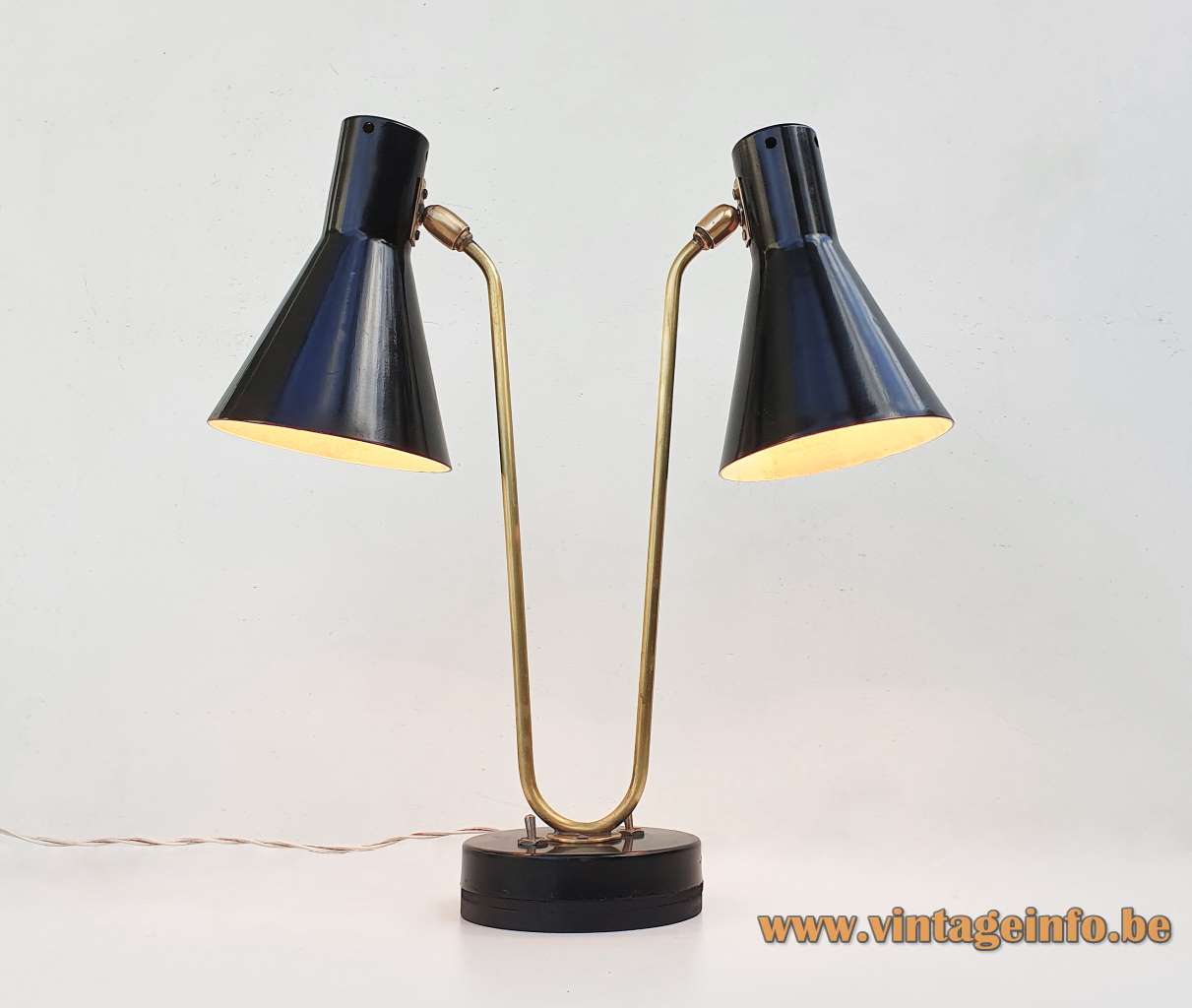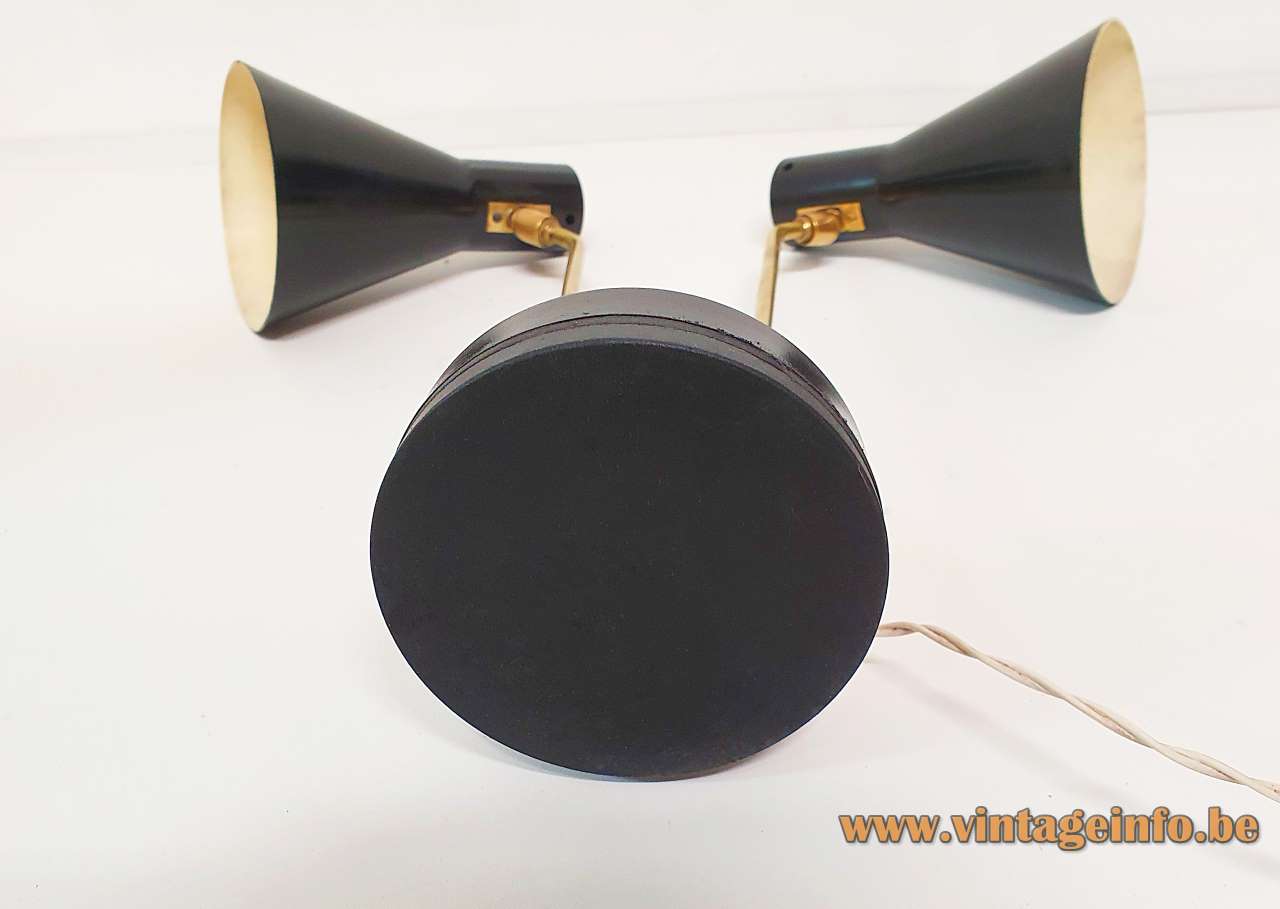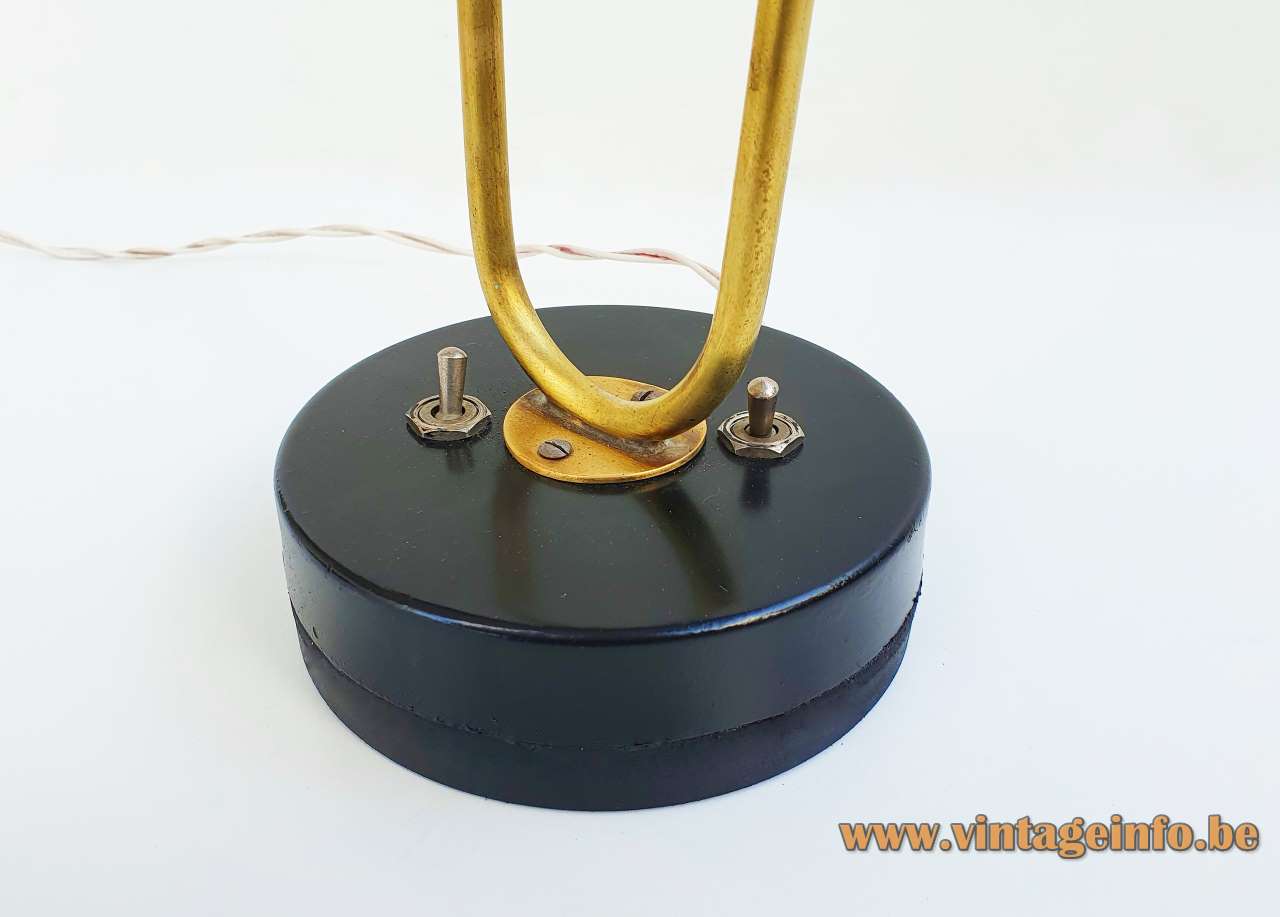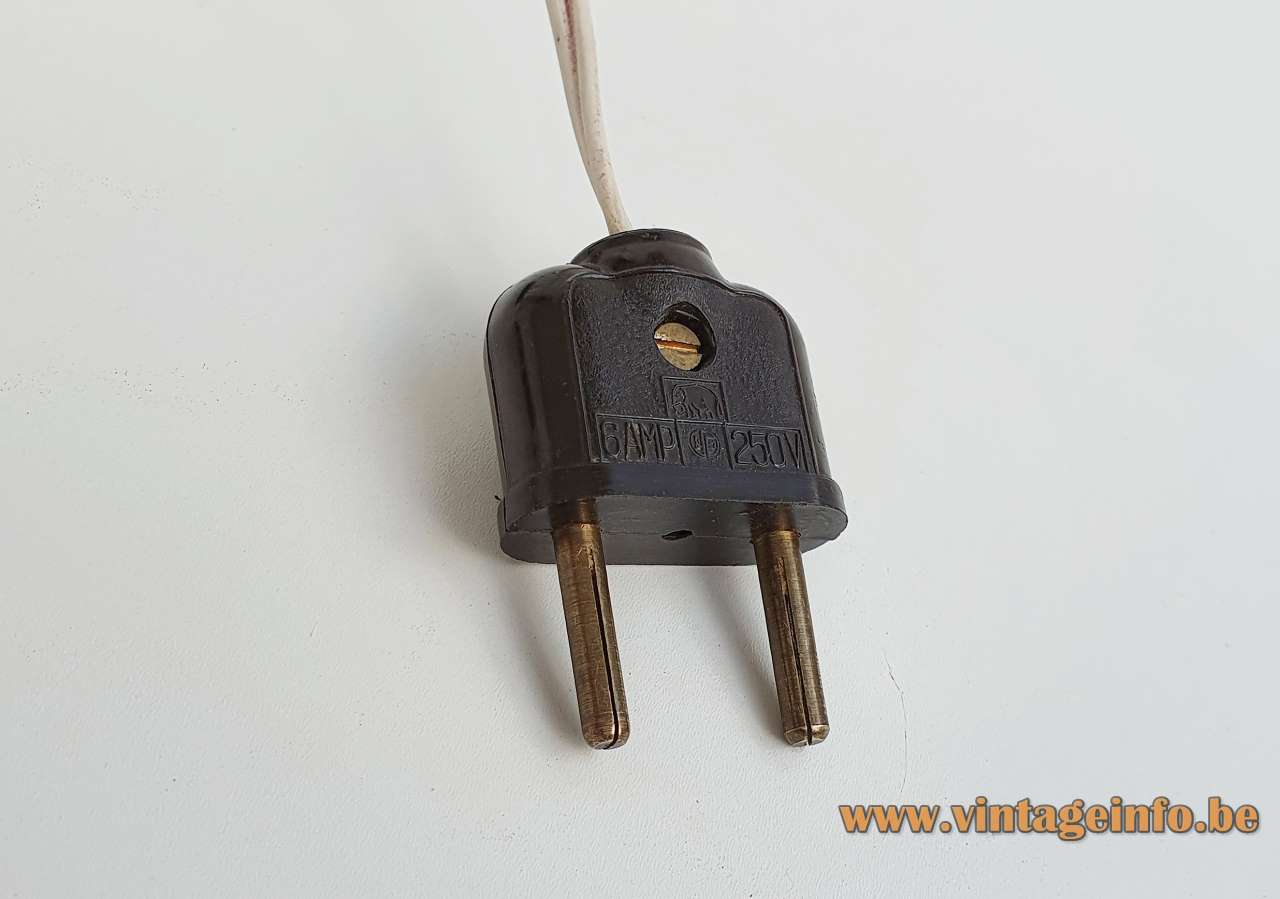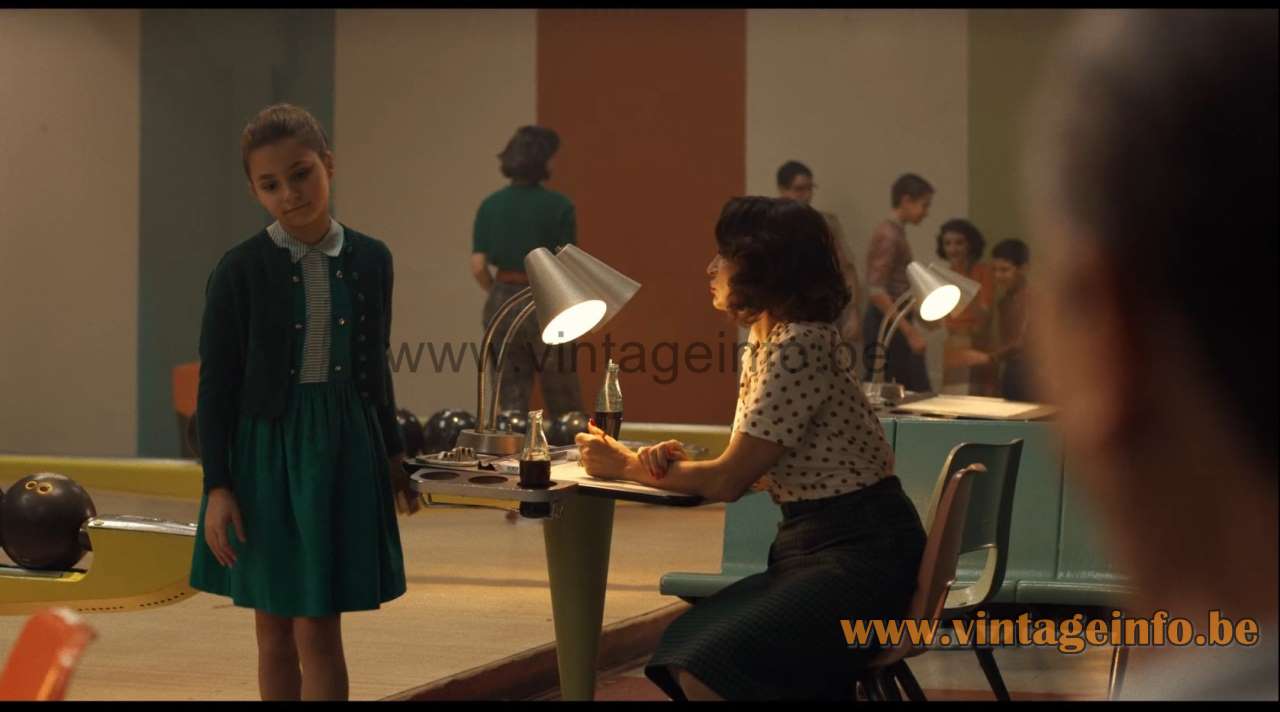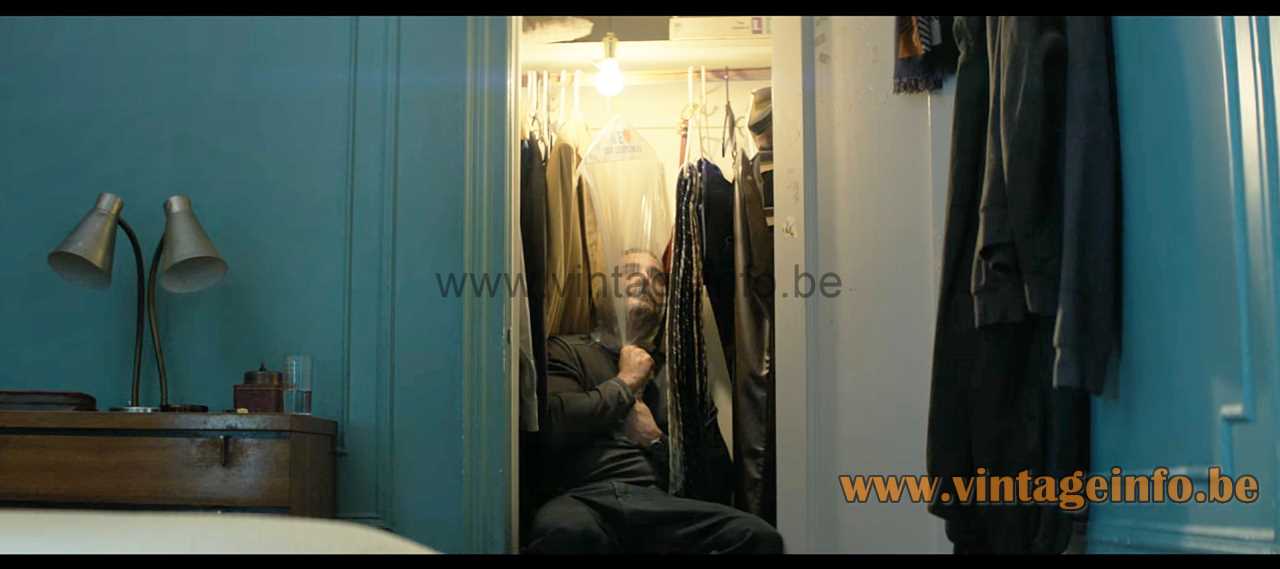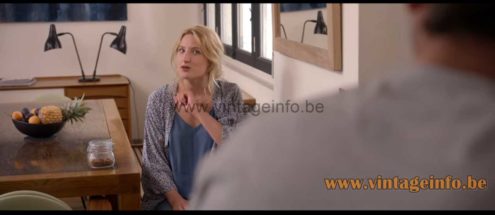Lamps in the movies
Two Lightolier double desk lamps designed by Gerald Thurston were used as a prop in the 2019 American crime film The Irishman. Directed and produced by Martin Scorsese and written by Steven Zaillian. Starring Robert De Niro, Al Pacino, Joe Pesci, Ray Romano and Anna Paquin. The film is about a truck driver who becomes a contract killer.
A Gerald Thurston double desk lamp was used as a prop in the 2017 psychological action thriller film You Were Never Really Here. Starring Joaquin Phoenix, Ekaterina Samsonov and Alex Manette.
A Gerald Thurston double desk lamp was used as a prop in the 2017 film Jour J (alternative titel: Wedding Unplanned). Jour J is a French comedy film directed by Reem Kherici. Starring Reem Kherici, Nicolas Duvauchelle and Julia Piaton.
Many thanks to Ger for the beautiful pictures and enthusiasm.
Gerald Thurston Double Desk Lamp
Materials: Black painted round base. Curved & folded brass rod. Brass joints. 2 black painted aluminium conical lampshades. Some brass and metal parts. 2 brass B22 sockets.
Height: 50 cm / 19.68”
Width: 45 cm / 17.71”
Lampshade: ∅ 13 x 18 cm / 5.11 x 7.08”
Base: ∅ 13 cm / 5.11”
Electricity: 2 bulbs B22, 2 x 60 watt maximum, 110/220 volt.
Any type of light bulb can be used, not a specific one preferred.
Period: 1950s, 1960s – Mid-Century Modern.
Designer: Gerald “Jerry” Edwin Thurston (1914-2005).
Manufacturer: Lightolier Inc., Fall River, Massachusetts, United States of America.
Other versions: This Gerald Thurston double desk lamp exists in many varieties.
Gerald Thurston
Gerald “Jerry” Edwin Thurston was born on 24 July 1914 in Delaware County, Ohio, USA. Jerry earned an industrial design degree from the School of the Art Institute of Chicago (SAIC). While he was an art student, he did freelance design work for the Zenith Radio Corporation in Chicago. (ZRC was founded as Chicago Radio Labs in 1918. Today the company is named Zenith Electronics LLC and is part of LG Electronics).
He began his career with the New Metal Craft Company in Chicago (founded in 1932, out of business since 2016) where he designed custom lighting fixtures and ornamental items for decorators and architects.
During World War II, Mister Thurston worked in the engineering department of a shipbuilding company in Mobile, Alabama.
In 1938, he became a charter member of the Industrial Designers Institute (IDI), the oldest organisation of professional industrial designers in the USA. He served on the organisations design selection committee and was a member of its executive council, chairman of the New York chapter and a vice president and member of its National Board of Trustees.
In 1941 Jerry married Gwendolyn ‘Gwen’ Louise Starkey (1914-1997). The couple had two sons, John and Rob.
Around 1950 he was employed with Lightolier Inc. of New York and Jersey City. He worked for Lightolier for 30 years before retiring from the Jersey City office as head of the design department of residential lighting. He became well known internationally for the Lightolier Scandia Collection and several other lamps.
Exhibitions
Gerald E. Thurston has been involved in the 1950 Good Design Exhibition at the MoMA, the Museum of Modern Art in New York, between November 1950 and January 1951. Charles Eames, Finn Juhl, Eero Saarinen, George Nelson, Alvar Aalto, Paavo Tynell and Edward Durell Stone, among others, were involved. A green enamelled floor lamp of Thurston was on display.
Gerald Thurston past away on 4 May 2005 in Cranford, Union, New Jersey. He left his sons, two grandchildren and three great-grandchildren.
Industrial Designers Institute
In 1965 IDI merged with the American Society of Industrial Designers (ASID), and the Industrial Designers Education Association (IDEA) into the Industrial Designers Society of America, IDSA.
Lightolier
The Lightolier Inc. company was founded in 1904 by Bernhard Blitzer under the name of New York Gas and Appliance Company. Later the name changed into Lightolier Inc. when electric light became more widely accepted. The name Lightolier is a contraction of the words light and chandelier.
In the 1960s Lightolier introduced the first track lighting system, designed by Anthony Donato. Lightolier also produced a huge amount of lamps designed by Gaetano Sciolari in the 1960’s and 1970’s. His Cubic chandelier was a big success in the States thanks to it’s presence in the Dallas TV series and in the James Bond film Live and Let Die (1973). The Lytegem series was designed by Michael Lax.
Lightolier was the first lighting company to introduce digital lighting systems in the early 90’s. In 2007, Koninklijke Philips N.V. from the Netherlands (Philips Royal Electronics) announced that it would acquire the Genlyte Group which would make Lightolier a part of Philips.
Links and Sources (external links open in a new window)
School of the Art Institute of Chicago – Wikipedia
School of the Art Institute of Chicago website
Industrial Designers Society of America – Wikipedia
History of IDSA on their website
Zenith Electronics – Wikipedia
Designer Gerald Thurston and his Million-Dollar Hand – GlobalLighting
You Were Never Really Here – Wikipedia
You Were Never Really Here – IMDb
Jour J (Wedding Unplanned – 2017) – IMDb
